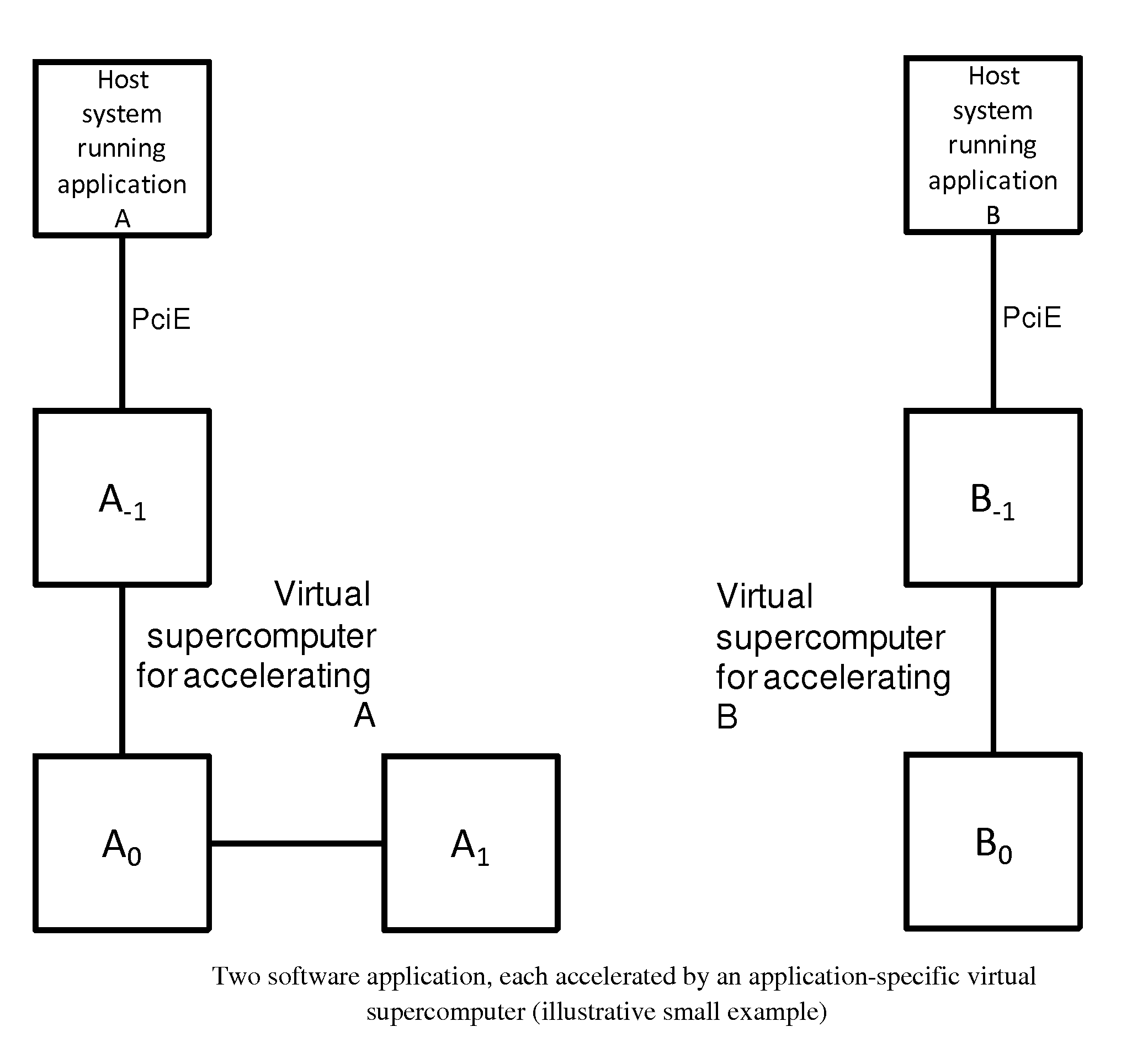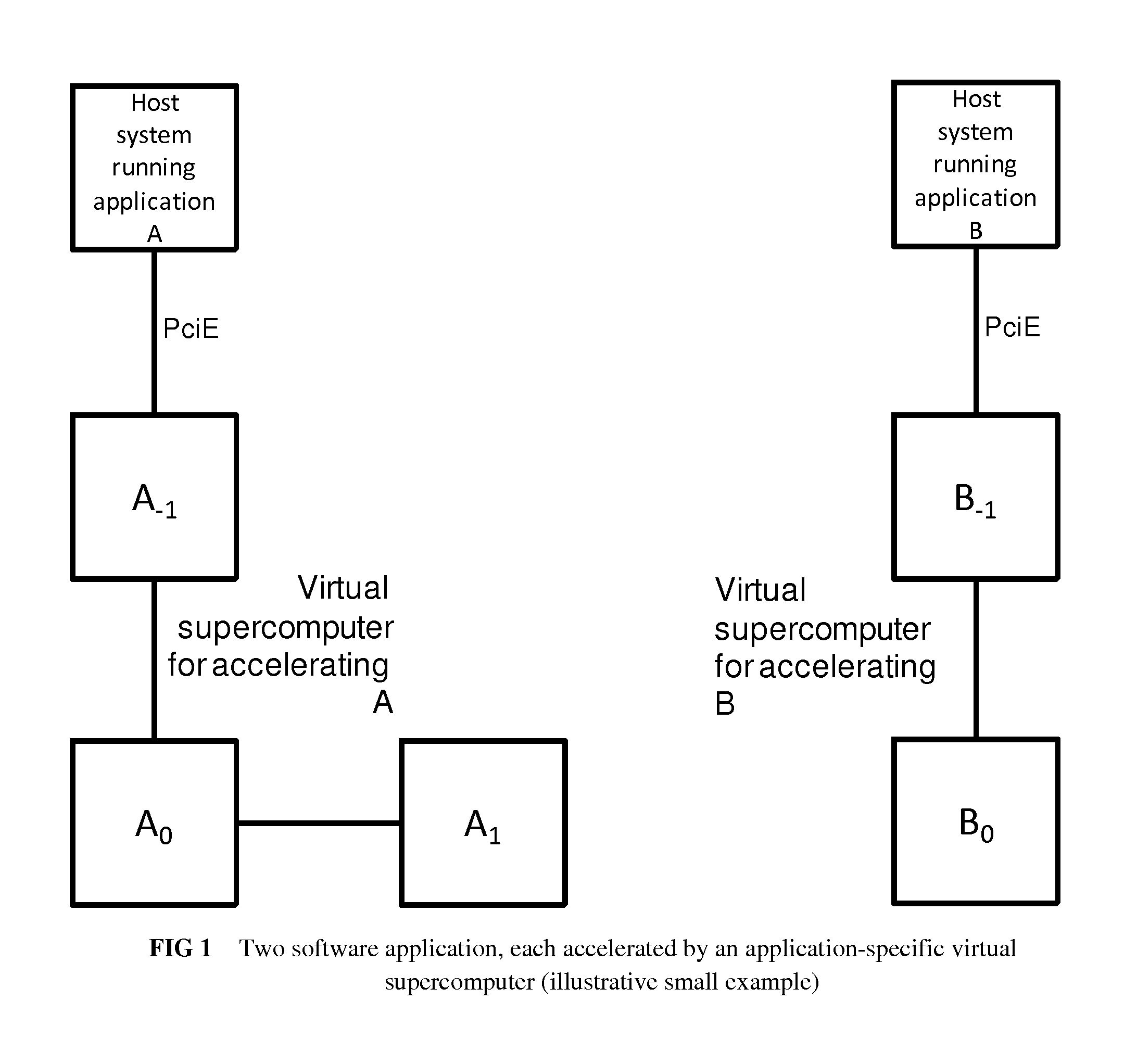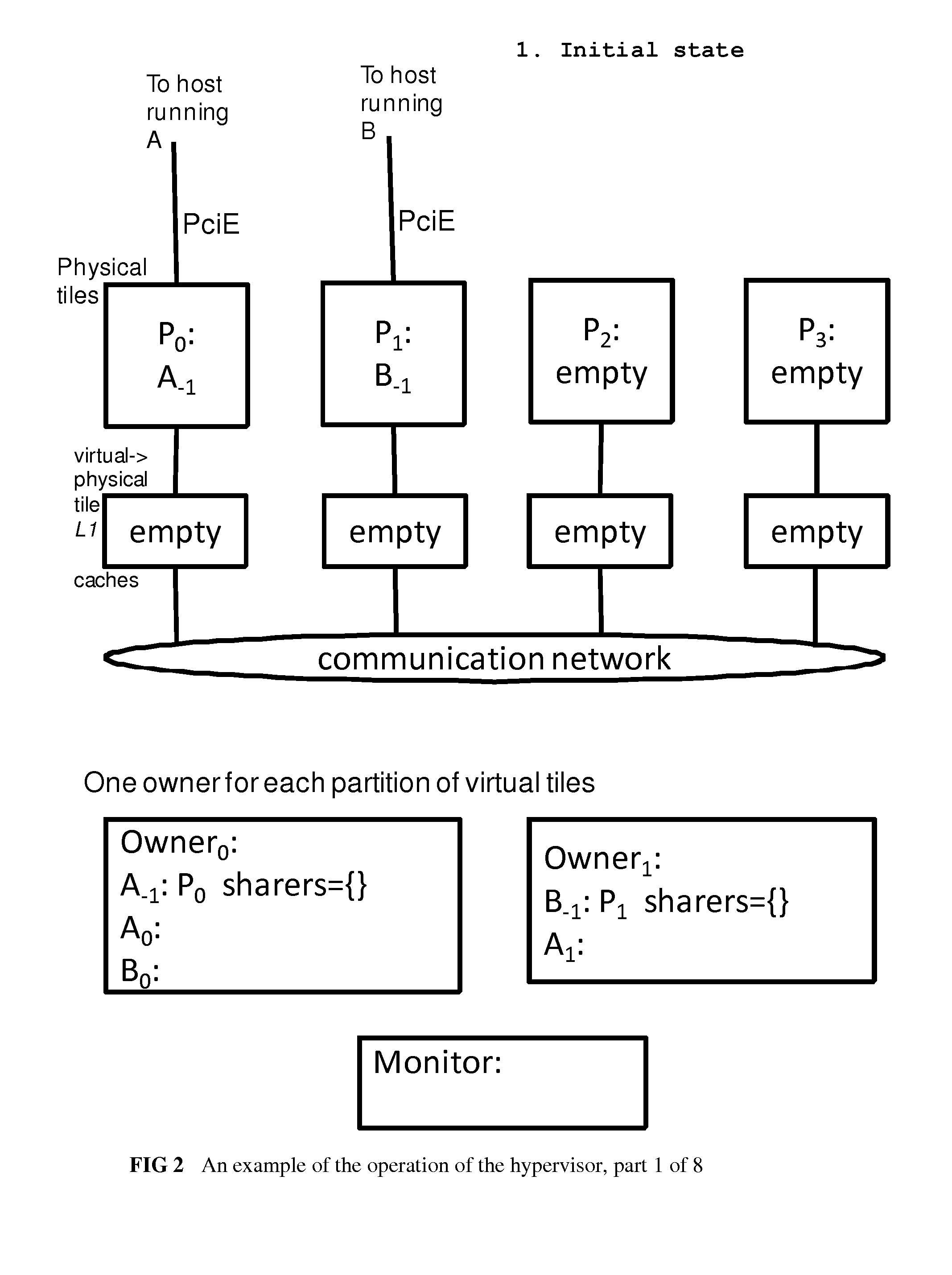Parallel hardware hypervisor for virtualizing application-specific supercomputers
a hardware hypervisor and application-specific technology, applied in the direction of program control, instruments, sustainable buildings, etc., can solve the problems of increasing the difficulty of programming and using parallel multi-core processor systems, increasing the parallelism of general-purpose processors, and continuing the need for increased performance and power reduction
- Summary
- Abstract
- Description
- Claims
- Application Information
AI Technical Summary
Benefits of technology
Problems solved by technology
Method used
Image
Examples
Embodiment Construction
[0091]We will now describe the details of a parallel hypervisor system for virtualizing application-specific supercomputers, where the system comprises:[0092]At least one software-virtual hardware pair consisting of a software application, and an application-specific virtual supercomputer for accelerating the said software application, where:[0093]The virtual supercomputer contains one or more virtual tiles; and[0094]The software application and the virtual tiles communicate among themselves with messages;[0095]One or more reconfigurable physical tiles, wherein each virtual tile of each virtual supercomputer can be implemented on at least one physical tile, by configuring the physical tile to perform the virtual tile's function; and[0096]A scheduler implemented substantially in hardware, for parallel pre-emptive scheduling of the virtual tiles on the physical tiles.
[0097]The preferred embodiment of the hypervisor consists of the following major parts:[0098]The overall hardware struc...
PUM
 Login to View More
Login to View More Abstract
Description
Claims
Application Information
 Login to View More
Login to View More - R&D
- Intellectual Property
- Life Sciences
- Materials
- Tech Scout
- Unparalleled Data Quality
- Higher Quality Content
- 60% Fewer Hallucinations
Browse by: Latest US Patents, China's latest patents, Technical Efficacy Thesaurus, Application Domain, Technology Topic, Popular Technical Reports.
© 2025 PatSnap. All rights reserved.Legal|Privacy policy|Modern Slavery Act Transparency Statement|Sitemap|About US| Contact US: help@patsnap.com



